What Kills Mold? 15+ Proven Methods That Work Instantly
Protect your home and family with scientifically proven mold removal methods. From natural DIY solutions to professional treatments – discover what really works.
🏠 Worried About Mold in Your Home? Get Expert Help Now!
Understanding what kills mold is crucial, but ensuring your home is mold-free requires expert help. Don’t let mold go unchecked! Contact Mold Busters for a free virtual mold inspection. Our certified inspectors provide a thorough assessment and a plan to eliminate mold, keeping your home safe and healthy.
Mold growth in your home poses serious health risks and can cause thousands of dollars in structural damage if left untreated. Whether you’re dealing with black mold in your bathroom or surface mold on wooden furniture, understanding what kills mold effectively is crucial for protecting your family’s health and your property investment.
This comprehensive guide explores 15+ proven mold removal methods, from natural DIY solutions like white vinegar and baking soda to commercial mold killing sprays and professional-grade treatments. We’ll cover what works best for different surfaces, when to tackle mold yourself versus calling professionals, and most importantly – how to kill mold permanently to prevent dangerous regrowth.
⚡ Mold Treatment Effectiveness Comparison
| Method | Effectiveness | Best For | Safety Level | Cost |
|---|---|---|---|---|
| White Vinegar | 82% of species | Non-porous surfaces | High | $ |
| Hydrogen Peroxide | 85% of species | Fabric, upholstery | Medium | $ |
| Bleach | Surface only | Non-porous surfaces | Low | $ |
| Tea Tree Oil | 90% of species | Small areas | High | $$$ |
| Professional Treatment | 99%+ complete | All surfaces | Highest | $$$-$$$$ |
What Kills Mold Instantly? Fast-Acting Solutions
For immediate mold elimination, 70% isopropyl alcohol kills mold on contact within seconds on non-porous surfaces. Steam treatment at 212°F provides instant kill for all species, while 3% hydrogen peroxide begins working immediately but requires 10-minute contact time.
Killing mold quickly requires understanding which methods provide immediate results versus those that work over time. When dealing with active mold growth, especially in high-moisture areas, fast action prevents spore spread and reduces health exposure risks.
🧪 Chemical Solutions
- 70% isopropyl alcohol – kills on contact within seconds
- 3% hydrogen peroxide – begins oxidizing mold cells immediately
- Commercial mold killer spray – quaternary ammonium compounds
🌡️ Heat Treatment
- Steam at 212°F – instant kill for all species
- High heat settings – clothes dryer treatment
- Professional equipment – specialized steam cleaners
⚠️ Important Reality Check
While these methods kill visible mold instantly, complete elimination requires addressing root systems and moisture sources. Surface treatments that work “instantly” often miss hidden mold colonies that regrow within days.
🔬 Best Mold Killer Spray for Instant Results
🥇 Top Commercial Products
- Concrobium Mold Control – crushes spores as it dries
- RMR-86 Instant Mold Remover – bleach-based formula
- Benefect Decon 30 – botanical antimicrobial
💡 Selection Tips
- Choose products specifically labeled for mold elimination
- Look for surfactants that penetrate colonies
- Prioritize extended contact time formulas
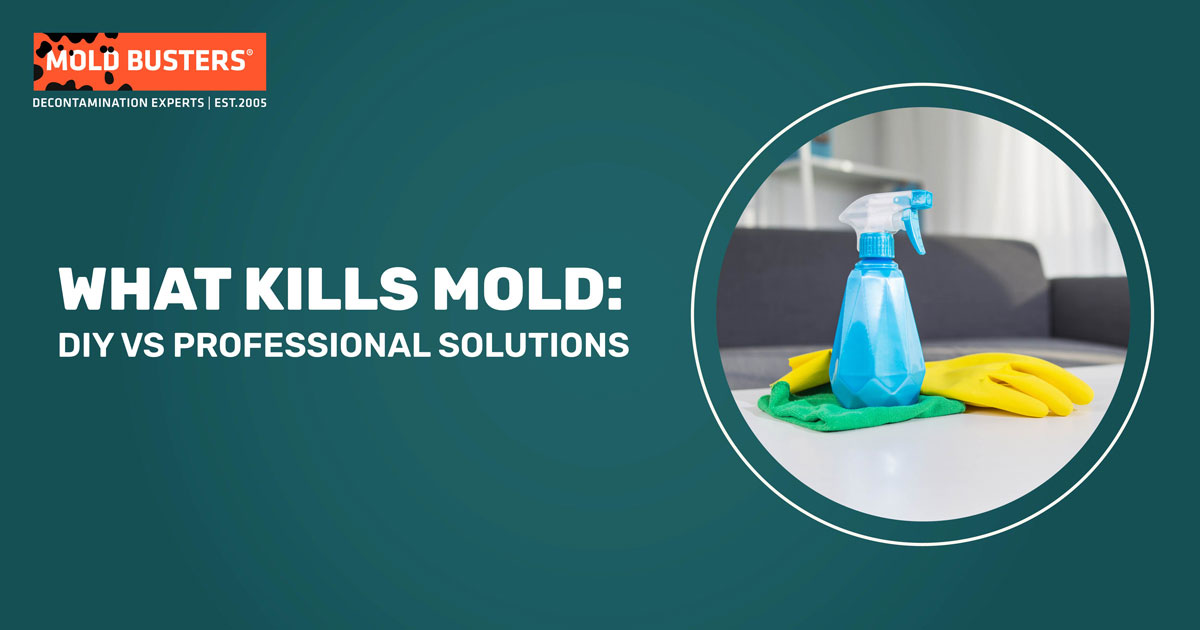
Professional-grade mold elimination requires the right combination of methods and expertise
What Kills Mold and Mildew? Treating Both Problems Together
White vinegar solution effectively kills both surface mildew and shallow mold penetration simultaneously. Hydrogen peroxide (3%) oxidizes both mold cell walls and mildew surface proteins, making it ideal for comprehensive treatment.
Mold and mildew often occur together in humid environments, but they require slightly different treatment approaches. Mildew appears as a surface-level powdery growth, while mold develops deeper root systems that penetrate porous materials.
🎯 Dual-Action Solutions
- White vinegar solution – surface and shallow penetration
- Hydrogen peroxide (3%) – oxidizes both organisms
- Baking soda paste – alkaline environment hostile to both
- Tea tree oil spray – natural antifungal compounds
🔄 Treatment Differences
- Mildew: Quick surface response
- Mold: Requires deeper treatment
- Best approach: Surface clean then penetrate
- Prevention: Moisture source elimination
🚿 Best Approach for Bathroom Mold and Mildew:
Start with hydrogen peroxide spray to kill surface mildew instantly, then apply vinegar solution for deeper mold penetration. This one-two approach addresses both problems without harsh chemical interactions.
For severe mildew outbreaks covering large shower areas, professional bathroom mold removal services provide comprehensive treatment that eliminates both visible growth and prevents rapid regrowth.
Understanding Mold Spores: What Kills Them and Why It Matters
HEPA air filtration captures 99.97% of airborne mold spores 0.3 microns and larger, while UV-C light systems destroy spore DNA at 253.7 nanometer wavelength. Maintaining humidity below 50% prevents spore activation and new colony formation.
Mold spores are microscopic reproductive cells that remain viable for years, even after visible mold is eliminated. Understanding how to kill mold spores is crucial for preventing regrowth and protecting indoor air quality.
🌪️ Airborne Spore Elimination
- HEPA air filtration – captures 99.97% of spores
- UV-C light systems – destroys spore DNA
- Professional air scrubbers – negative pressure filtration
- Humidity control – below 50% prevents activation
🧹 Surface Spore Treatment
- Heat treatment – above 140°F for 30+ minutes
- Chemical treatments – may only suppress temporarily
- Professional protocols – specialized antimicrobial systems
- Spore counting – before and after verification
🚨 Critical Spore Facts
- Spores survive freezing temperatures and remain dormant until conditions improve
- Surface cleaning often spreads spores rather than eliminating them
- Some spores resist standard treatments and require specialized protocols
- Professional spore counting ensures complete elimination verification
What Kills Black Mold? The Most Dangerous Mold Species
Black mold (Stachybotrys chartarum) produces dangerous mycotoxins that remain toxic even after the mold is killed. Professional remediation is non-negotiable for any visible black mold growth due to severe health risks including respiratory problems and neurological symptoms.
🔍 Identification Signs
- Appearance: Dark green or black patches with slimy texture
- Odor: Strong musty smell that worsens over time
- Timing: Appears in water-damaged areas within 24-48 hours
- Health: Associated symptoms in household members
⚠️ Emergency Protocol
- Evacuate sensitive individuals immediately
- Seal affected area with plastic sheeting
- Use N95 or P100 respirator masks
- Never use bleach on black mold
🚨 Why Black Mold Requires Special Treatment
Unlike common household molds, black mold produces trichothecene mycotoxins that can remain airborne for months after improper removal, penetrate deeper into materials than visible growth suggests, and cause long-term health effects including memory problems and chronic fatigue.
For confirmed black mold, professional remediation is non-negotiable. However, if you suspect black mold but haven’t confirmed it, these emergency measures can help while you arrange professional mold testing:
🛡️ Safe Black Mold Treatment Protocol
- Evacuate sensitive individuals (children, elderly, immunocompromised)
- Seal affected area with plastic sheeting
- Use N95 or P100 respirator masks
- Apply 3% hydrogen peroxide solution – let sit 10 minutes before gentle scrubbing
- Never use bleach on black mold as it can release dangerous chlorine gas
Best Products That Kill Mold on Different Surfaces
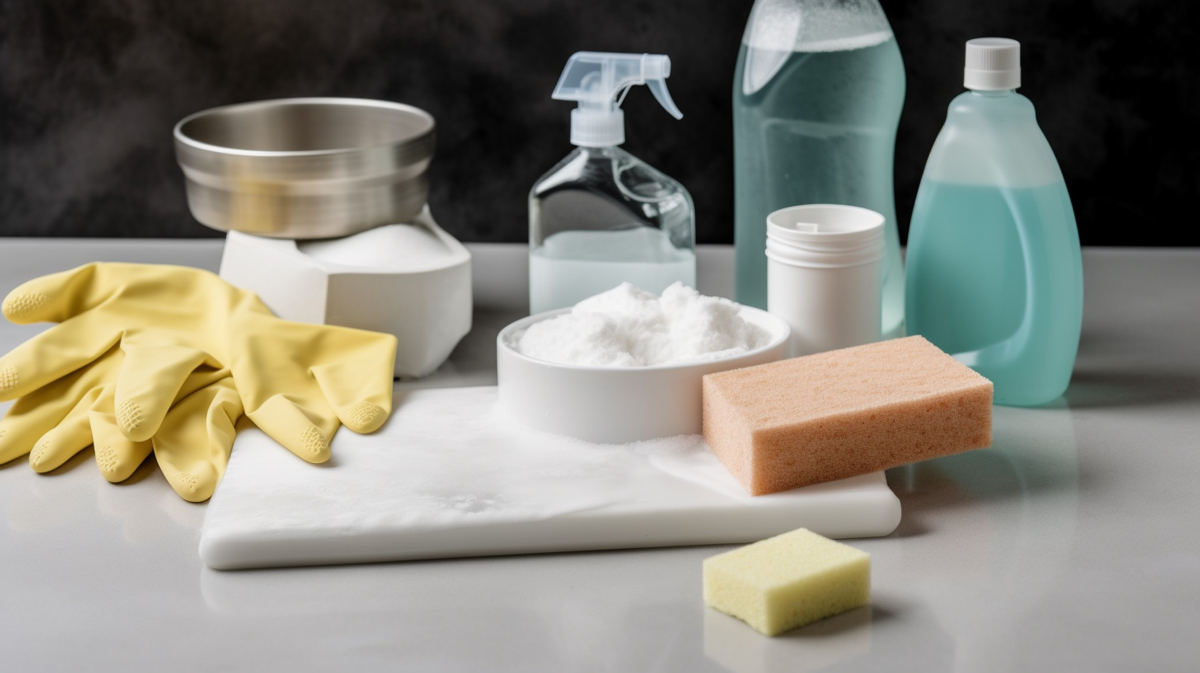
Different surfaces require specific mold treatment approaches for optimal results
The key to effective mold removal is matching the right treatment to the specific surface material. Using the wrong method can push mold deeper into porous materials or damage expensive surfaces.
What Kills Mold on Wood Surfaces?
🎨 Painted/Sealed Wood
- White vinegar solution (undiluted) – 60 minute contact
- Stiff bristle brush – penetrate wood grain
- Hydrogen peroxide follow-up – deeper penetration
🌲 Raw Wood Treatment
- Borax solution – 1 cup per gallon warm water
- Alkaline environment – disrupts cellular structure
- Long-term inhibition – boron compounds prevent regrowth
🚫 Critical Warning
Never use bleach on wood. The high water content feeds mold growth in porous materials, and chlorine cannot penetrate wood fibers effectively. For detailed guidance, see our guide on mold on wood treatment.
🧱 What Kills Mold on Drywall and Walls?
🔧 Small Spot Treatment
- 3% hydrogen peroxide – superior for paper surfaces
- 10-minute contact time – before gentle scrubbing
- Complete drying – within 24 hours using fans
🏗️ When Replacement Needed
- Over 2 square feet – replacement more cost-effective
- Paper layer penetration – structural compromise
- Professional service – for extensive growth
Professional wall mold removal becomes necessary when mold has penetrated the paper layer or when growth exceeds 10 square feet per Health Canada guidelines.
🛋️ What Kills Mold on Fabric and Upholstery?
🧪 Safe Fabric Treatment
- Hydrogen peroxide – test hidden area first
- 2:1 water ratio – prevents fabric damage
- Light spray and blot – never saturate
- Professional fans – prevent moisture damage
💎 Valuable Fabrics
- Professional restoration – specialized ozone treatment
- Controlled drying – preserve fabric integrity
- Complete elimination – verified through testing
🔲 What Kills Mold on Tiles and Grout?
🧽 Effective Tile Mold Removal Process:
- Baking soda paste (3:1 ratio with water) for initial scrubbing
- Undiluted white vinegar spray – follow immediately
- 15-minute reaction time – acid-base reaction lifts mold
- Hydrogen peroxide finish – residual spore elimination
🏗️ What Kills Mold on Concrete Surfaces?
🧪 Safe Concrete Treatment
- TSP solution – 1/2 cup per gallon warm water
- Stiff brush scrubbing – penetrate concrete pores
- Thorough rinsing – remove all residue
- Concrete sealer – prevent future growth
💪 Professional Treatment
- Pressure washing – with anti-fungal treatments
- Comprehensive results – deep penetration
- Protective coatings – long-term prevention
For severe concrete mold, professional pressure washing with anti-fungal treatments provides more comprehensive results.
Natural Remedies That Kill Mold: Non-Toxic DIY Solutions
White vinegar is the most researched natural mold killer, with scientific studies confirming effectiveness against 82% of common household mold species. Tea tree oil provides 90% effectiveness against mold, making it the strongest natural option available.
Natural mold removal methods appeal to health-conscious homeowners, especially those with children, pets, or chemical sensitivities. While generally safer, these methods require proper application for maximum effectiveness.
🥒 Does Vinegar Kill Mold Effectively?
✅ Proper Vinegar Application
- Undiluted white vinegar – 5% acetic acid minimum
- Direct spray application – don’t wipe immediately
- 60-minute contact time – maximum penetration
- Non-abrasive scrubbing – then rinse with clean water
📊 Scientific Results
- 82% effectiveness – against common species
- Acid disruption – breaks down cell walls
- Residual protection – continues working days
- Odor dissipation – within 2-3 hours
⚠️ Vinegar Limitations
Less effective against Aspergillus and Penicillium species commonly found in HVAC systems. These molds require stronger treatments or professional intervention. For detailed information, see our guide on vinegar’s effectiveness against mold.
🧂 How Baking Soda Kills Mold and Eliminates Odors
🔬 How It Works
- pH manipulation – alkaline environment (pH 9)
- Moisture absorption – removes mold’s water source
- Dual-action approach – kills and prevents regrowth
📋 Application Process
- 3:1 paste ratio – baking soda to water
- Thick layer application – cover moldy surfaces
- 2-4 hour drying – complete moisture removal
- Scrub and vacuum – remove residue
Baking soda is particularly effective for carpet mold treatment because it neutralizes odors trapped in fibers.
🌱 Tea Tree Oil: The Most Powerful Natural Antifungal
💪 Superior Effectiveness
- 90% effectiveness – against household molds
- Terpenes and compounds – proven antifungal properties
- Residual protection – continues working for weeks
- No rinsing required – leave treatment in place
💰 Cost-Effective Treatment
- Small amounts needed – 1 tsp per cup water
- Spray bottle application – shake before use
- Weekly retreatment – for 3 weeks total
- Long-term value – $10-15 per bottle goes far
🧪 DIY Mold Killer Solution Recipes
🔹 All-Purpose Solution
- 2 cups water
- 1 cup white vinegar
- 2 tablespoons dish soap
💪 Heavy-Duty Solution
- 1 cup hydrogen peroxide
- 2 cups water
- 1 tablespoon baking soda
🌿 Natural Antifungal
- 2 cups water
- 2 teaspoons tea tree oil
- 1 teaspoon liquid castile soap
🦠 Enzyme Solution
- Commercial enzyme cleaner
- Follow package directions
- Breaks down organic matter
💧 Hydrogen Peroxide: Bridge Between Natural and Chemical
✅ Safe Hydrogen Peroxide Application:
Use 3% solution (pharmacy grade) to avoid surface bleaching. Spray and allow 10-minute contact time, then wipe with clean cloth. The residual peroxide continues working while breaking down into harmless water and oxygen. Ideal for fabrics and acid-sensitive surfaces.
Bleach vs. Vinegar vs. Hydrogen Peroxide: Which Kills Mold Better?
Hydrogen peroxide offers the best balance with 85% effectiveness, no lingering odor, and breaks down into harmless compounds. Vinegar provides 82% effectiveness with better porous surface penetration, while bleach only works on non-porous surfaces and can make mold worse.
🚫 Why Bleach Often Fails Against Mold
📊 Bleach Effectiveness
- Non-porous surfaces: 95% surface kill
- Porous materials: Often makes worse
- Root penetration: Zero effectiveness
- Health risks: Respiratory irritation
⚠️ When Bleach Works
- Glass surfaces – completely non-porous
- Metal surfaces – no penetration needed
- Ceramic tiles – sealed surface treatment
- Never on wood/drywall/fabric
Critical limitation: The high water content in bleach solutions actually feeds mold roots in porous materials, often making the problem worse. See our detailed analysis on bleach limitations for mold treatment.
🥊 Vinegar vs. Hydrogen Peroxide: Head-to-Head
🥒 Vinegar Advantages
- Lower cost – $2-3 per gallon
- Longer shelf life – stable storage
- Better penetration – porous surfaces
- Residual protection – anti-fungal coating
💧 Hydrogen Peroxide Advantages
- Higher kill rate – 85% vs. 82%
- No lingering odor – dissipates quickly
- No discoloration – safe for most surfaces
- Harmless breakdown – water and oxygen
🏆 The Winner Depends on Your Situation
Use vinegar for widespread treatment and prevention. Choose hydrogen peroxide for fabrics, upholstery, and odor-sensitive areas.
How to Kill Mold Permanently and Prevent Regrowth
🎯 Need Guaranteed Permanent Results?
DIY treatments often fail because they only address surface symptoms. Professional mold remediation tackles visible growth AND underlying causes for permanent elimination.
Permanent mold elimination requires addressing three critical factors: viable spores, moisture sources, and nutrient sources. Most DIY treatments fail because they only tackle surface symptoms while ignoring root causes.
🔄 Understanding Why Mold Returns After Cleaning
🎯 Three Critical Factors
- Viable spores – survive surface cleaning
- Moisture sources – humidity, leaks, condensation
- Nutrient sources – dust, paper, wood
💪 Professional Advantage
- Simultaneous treatment – all three factors
- Higher success rate – vs. DIY approaches
- Comprehensive protocols – proven methodologies
Professional mold removal addresses all three factors simultaneously, which explains the higher success rate compared to DIY approaches.
📋 Step-by-Step Permanent Mold Elimination Process
📅 Phase 1: Moisture Control (Days 1-2)
- Identify all water sources using moisture meters
- Fix leaks, improve ventilation
- Reduce humidity below 50%
- Use dehumidifiers before treatment
🧹 Phase 2: Complete Treatment (Days 3-5)
- Remove all visible mold
- Treat 3-foot radius around growth
- Apply residual treatments
- Address hidden spore locations
🛡️ Phase 3: Prevention (Days 6-30)
- Install humidity monitoring
- Apply mold-resistant coatings
- Implement maintenance schedule
- Monitor vulnerable areas
🛡️ Long-term Mold Prevention Strategies
🌡️ Environmental Controls
- Humidity 30-50% – year-round maintenance
- Proper ventilation – bathrooms, kitchens, basements
- Condensation control – windows and exterior walls
🏗️ Material Choices
- Mold-resistant drywall – high-moisture areas
- Low-VOC paints – with anti-microbial additives
- Synthetic insulation – replace organic materials
For comprehensive prevention guidance, visit our mold prevention resource center.
Temperature, Humidity, and Environmental Conditions That Kill Mold
Heat treatment at 140°F (60°C) for 30 minutes kills most common household molds, while steam at 212°F provides instant elimination. However, humidity control below 50% is the most effective long-term prevention strategy.
🔥 What Temperature Kills Mold Spores?
🌡️ Effective Heat Parameters
- 140°F for 30 min – most common molds
- 160°F for 10 min – heat-resistant species
- 212°F steam – instant kill all species
🔧 Heat Applications
- Steam cleaning – carpets and upholstery
- Clothes dryer – high heat 40+ minutes
- Professional treatment – attic heat systems
⚠️ Important Limitation
Heat only kills active mold – spores can survive extreme temperatures and reactivate when conditions improve. Combined treatment approaches are essential for lasting results.
🧊 Does Cold Temperature Kill Mold?
❄️ Cold Temperature Facts:
- Dormancy only: Mold goes dormant below 40°F but remains viable
- Preservation effect: Freezing can preserve spores for extended periods
- Limited application: Freezer treatment for small items only (48+ hours)
- Combined approach: Must include moisture removal and washing
💧 Optimal Humidity Levels for Mold Control
📊 Critical Thresholds
- Below 30%: Cannot establish new growth
- 30-50%: Ideal range for prevention
- Above 60%: Rapid establishment 24-48 hours
- Above 80%: Toxic species thrive
🏠 Professional Management
- Whole-house systems – dehumidification
- Vapor barriers – crawl spaces/basements
- Mechanical ventilation – with sensors
Does Sunlight or UV Light Kill Mold?
Direct sunlight requires 6+ hours continuous exposure for surface mold kill with limited 1-2mm penetration depth. Professional UV-C light systems at 253.7 nanometers provide superior controlled germicidal radiation for comprehensive mold elimination.
🌞 Natural Sunlight Effectiveness
☀️ Treatment Parameters
- Direct exposure required – window glass blocks UV
- 6+ hours continuous – for surface kill
- Dry conditions essential – moisture negates effect
- Limited penetration – 1-2mm maximum depth
🎯 Best Applications
- Outdoor furniture – direct sun access
- Small fabric items – laid flat
- Pre-treatment – before other methods
⚠️ Why Sunlight Fails Indoors
Most household mold grows in dark, humid locations where sunlight never reaches. Additionally, UV radiation cannot penetrate porous materials effectively, limiting its usefulness for comprehensive treatment.
💡 Professional UV-C Light Treatment
⚡ UV-C Advantages
- Higher energy output – optimal 253.7 nanometers
- Controlled exposure – precise time and distance
- Enclosed space use – not weather dependent
- Resistant spore treatment – chemical-resistant strains
🏠 Specialized Applications
- Air quality improvement – HVAC integration
- System decontamination – ductwork treatment
- Professional remediation – comprehensive protocols
UV-C systems are particularly valuable for air quality improvement and HVAC system decontamination.
What Kills Mold Smell? Eliminating Persistent Musty Odors
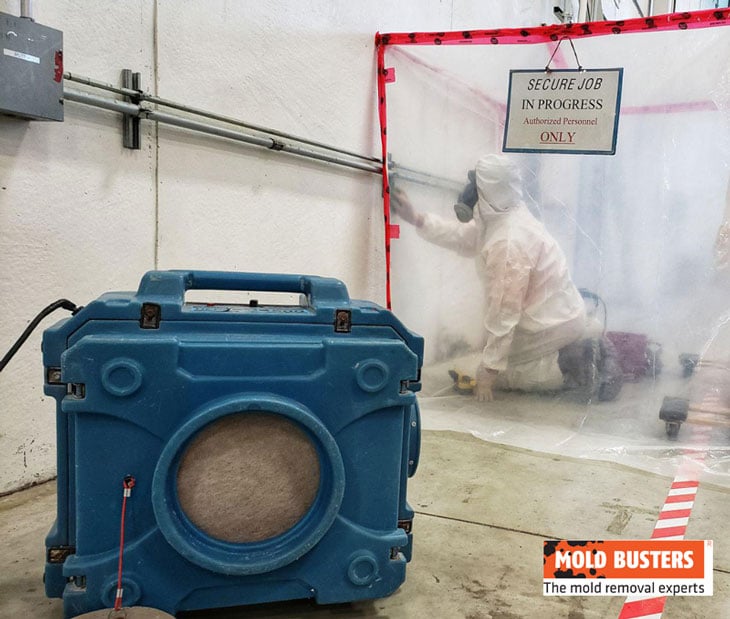
Professional mold removal addresses both visible growth and persistent odor sources
Mold odors persist after cleaning because volatile organic compounds (VOCs) remain embedded in porous materials. Professional ozone shock treatment provides the most complete odor elimination by breaking down organic molecules at the source.
🤔 Why Mold Smells Linger After Cleaning
🧪 MVOC Sources
- Microbial VOCs – metabolic byproducts
- Deep penetration – into porous materials
- Months of off-gassing – after mold death
- Hidden activity – ongoing growth indicators
📍 Common Residual Sources
- Wood subflooring – absorbed byproducts
- Drywall paper – retained compounds
- HVAC ductwork – contamination spread
- Carpet padding – not replaced during cleaning
🧽 Effective Mold Odor Elimination Methods
⚫ Activated Charcoal
- Bowl placement – in affected rooms
- 2-3 day replacement – until odors dissipate
- Enclosed spaces – closets, basements
🥒 White Vinegar Neutralization
- Shallow dishes – around affected areas
- Molecular binding – with odor compounds
- Multiple treatments – safer than chemicals
💨 Professional Ozone Treatment
Professional odor removal services use ozone generators that break down organic molecules causing persistent smells. This treatment requires temporary evacuation but provides the most complete odor elimination.
🚨 When Professional Odor Treatment is Necessary
🔍 Warning Signs of Hidden Mold:
- Odors return within days of cleaning
- Smell intensifies during humid weather
- Multiple rooms affected simultaneously
- Health symptoms accompany odor exposure
Commercial Mold Removal Products: When DIY Isn’t Enough
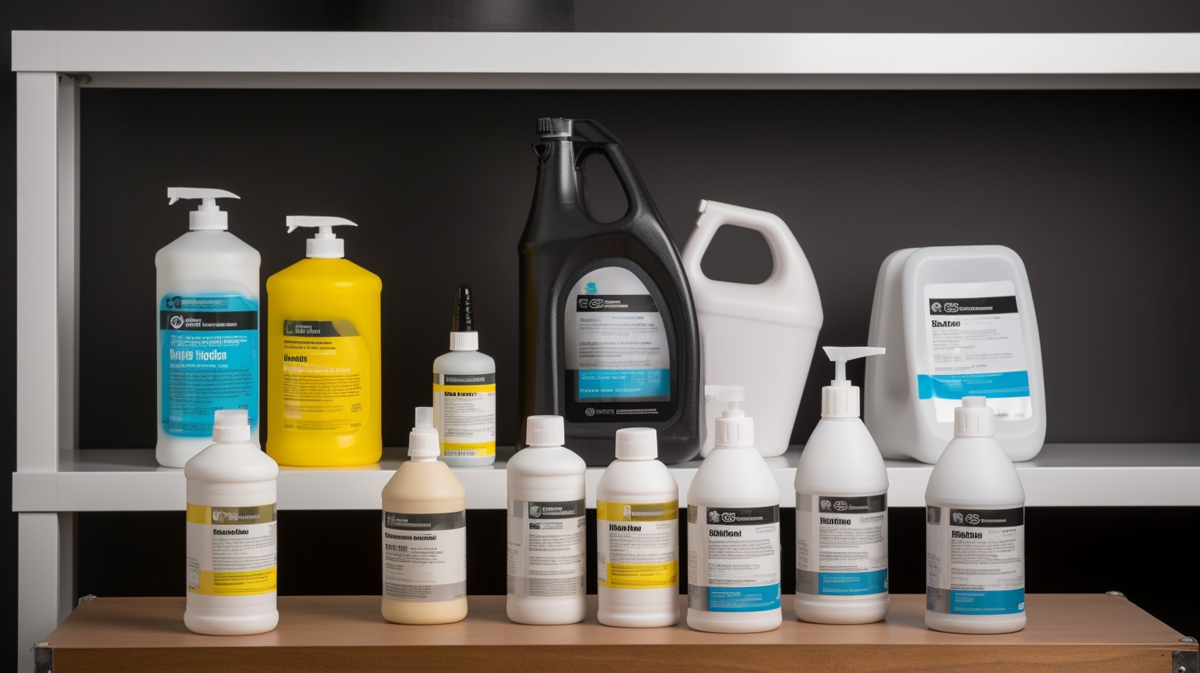
Commercial products offer stronger formulations but require proper selection and application
Commercial mold removal products contain stabilized active ingredients and specialized surfactants that maintain effectiveness longer than DIY mixtures. Quaternary ammonium compounds provide broad-spectrum fungicide action for challenging mold situations.
🎯 What to Spray on Mold to Kill It: Application Techniques
📋 Optimal Application Method
- Pre-cleaning: Remove debris blocking penetration
- Saturation: Keep surfaces wet for contact time
- Contact time: Minimum 10-minute dwell
- Agitation: Gentle scrubbing after contact
- Ventilation: Proper drying without contamination
🎯 Situation-Specific Sprays
- Emergency: 70% isopropyl alcohol
- Porous surfaces: Enzyme-based sprays
- Non-porous: Quaternary ammonium compounds
- Odor control: Hydrogen peroxide-based
🚫 Common Spray Application Mistakes
- Using too little product or wiping immediately after application
- Mixing different spray products (can create toxic reactions)
- Applying without proper protective equipment in enclosed spaces
- Failing to address moisture sources before spray treatment
🔬 Specialized Mold Cleaners vs. Generic Products
🧪 Key Active Ingredients
- Quaternary ammonium – broad-spectrum fungicide
- Sodium hypochlorite – powerful oxidizer
- Hydrogen peroxide stabilizers – extended contact
- Surfactants – penetrate mold colonies
🚫 Avoid Products With
- High alcohol content – fire hazard
- Ammonia – toxic gas when mixed
- Fragrances – mask rather than eliminate
- Vague claims – without mold-specific labeling
🏠 Household Products That Kill Mold: What You Already Have
🧂 Effective Household Killers
- Table salt + lemon juice – inhospitable environment
- Dish soap – surfactant properties
- Lemon juice – citric acid antifungal action
- Vodka (80+ proof) – high alcohol content
- Cornstarch – moisture absorption
🔄 Effective Combinations
- Salt + lemon paste – for grout mold
- Dish soap + vinegar – surface cleaning
- Baking soda + peroxide – deep cleaning
- Vodka spray – unwashable fabrics
⚠️ Safety Warning
Never mix household products. Combining different cleaning chemicals can create toxic gases. Use one method at a time and rinse thoroughly between treatments. Among household chemicals, hydrogen peroxide provides the best balance of safety and effectiveness.
🏭 Professional-Grade Mold Treatment Systems
💨 Antimicrobial Foggers
- Fine particle dispersion – reaches impossible areas
- Superior coverage – vs. manual treatment
- Containment required – proper safety protocols
🦠 Enzyme-Based Cleaners
- Advanced formulations – break down organic matter
- Longer-lasting results – vs. traditional cleaners
- Higher cost – but superior effectiveness
After mold elimination, specialized primers and paints containing antimicrobial additives prevent regrowth on treated surfaces. These coatings are particularly valuable in high-moisture areas like bathroom mold removal situations.
When to Call a Professional: Signs You Need Expert Help
Professional mold remediation becomes necessary when growth exceeds 10 square feet, affects HVAC systems, or when anyone experiences breathing difficulties. Certified professionals provide warranties, advanced diagnostics, and specialized equipment access that DIY methods cannot match.
🚨 Immediate Professional Intervention Required
🏥 Health-Based Triggers
- Breathing difficulties – anyone in home
- Children/elderly symptoms – mold exposure signs
- Immunocompromised individuals – in household
- Persistent symptoms – improve when away from home
📏 Scope-Based Triggers
- Over 10 square feet – Health Canada guidelines
- HVAC system growth – air duct contamination
- Behind walls – structural materials affected
- Crawlspace contamination – whole-house impact
Crawlspace mold affecting whole-house air quality requires immediate professional attention.
🎯 Professional Advantages Over DIY Treatment
🔬 Advanced Diagnostics
- Moisture mapping – identify all affected areas
- Air quality testing – before and after
- Species identification – targeted protocols
- Thermal imaging – hidden mold detection
🛠️ Specialized Equipment
- HEPA filtration – spore containment systems
- Professional antimicrobials – commercial-grade
- Structural drying – moisture source treatment
- Safety equipment – proper protective gear
🛡️ Warranty and Follow-up Services
Mold Busters provides comprehensive warranties and follow-up inspections to ensure complete elimination. Our certified technicians in Ottawa and Montreal use industry-leading protocols for permanent mold resolution.
💰 Cost Considerations: DIY vs. Professional Treatment
😰 Hidden Costs of DIY Failure
- Repeated treatments – when initial efforts fail
- Property damage – inappropriate methods
- Health care costs – prolonged exposure
- Reduced property value – persistent issues
📈 Professional Treatment ROI
- Single treatment – with warranty protection
- Structural preservation – prevent costly repairs
- Health protection – for family members
- Property value – maintained insurability
❓ Frequently Asked Questions
Yes, white vinegar kills approximately 82% of mold species through its acetic acid content. Apply undiluted vinegar, allow 60-minute contact time, then scrub and rinse. While effective for most household molds, some resistant species like certain Aspergillus strains may require stronger treatments. Learn more about vinegar’s effectiveness against specific mold types.
Hydrogen peroxide (3% solution) kills approximately 85% of mold species by oxidizing cell walls. However, “permanent” elimination requires addressing moisture sources and preventing regrowth. The peroxide itself breaks down into harmless water and oxygen, so ongoing moisture control is essential for long-term results.
HEPA air filtration systems capture 99.97% of mold spores 0.3 microns and larger. UV-C light systems installed in HVAC ducts kill airborne spores as air circulates. Professional air scrubbers during remediation remove spores disturbed during cleaning. Maintain humidity below 50% to prevent airborne spores from establishing new colonies.
No, freezing temperatures only make mold dormant – spores remain viable and will resume growth when conditions improve. Cold treatment can be used for small fabric items (freeze for 48+ hours) but must be followed by washing and thorough drying. Professional heat treatment at 160°F+ is more effective for permanent spore elimination.
70% isopropyl alcohol kills mold on contact within seconds on non-porous surfaces. Steam treatment at 212°F provides instant kill for all species. 3% hydrogen peroxide begins working immediately but requires 10-minute contact time for complete effectiveness. These alternatives avoid bleach’s limitations on porous surfaces.
Yes, isopropyl alcohol (70% concentration) effectively kills surface mold through dehydration and protein denaturation. It works instantly on non-porous surfaces but has limited penetration into porous materials. Denatured alcohol provides similar effectiveness but requires better ventilation due to stronger fumes.
🏠 Don’t Let Mold Compromise Your Family’s Health
Understanding what kills mold is just the first step. Ensuring complete elimination and preventing regrowth requires professional expertise and proven protocols.
🔍 Get Immediate Help:
- Free virtual inspections available
- 24/7 emergency response
- Same-day reports and estimates
- Certified, experienced technicians
💼 Professional Services:
Conclusion: Choosing the Right Mold Treatment for Your Situation
Effective mold treatment requires matching the right method to your specific situation, understanding limitations, and knowing when professional intervention becomes necessary. Small surface mold (less than 3 square feet) can often be treated with natural methods, while larger areas require professional remediation.
🏠 Small Surface Mold Treatment
- Less than 3 square feet – DIY methods effective
- Natural solutions – vinegar, hydrogen peroxide
- Non-porous surfaces – best results
- Adequate ventilation – for proper drying
🏭 Professional Treatment Situations
- Larger areas – persistent problems
- Comprehensive solutions – visible and underlying causes
- Cost-effectiveness – vs. repeated DIY attempts
- Health-sensitive – vulnerable family members
At Mold Busters, we’ve helped thousands of Canadian homeowners resolve mold problems safely and permanently since 2005. Our certified technicians use advanced diagnostic equipment and proven treatment protocols to ensure complete elimination and prevent regrowth.
Understanding what kills mold is the first step – ensuring it stays gone requires the expertise that comes from years of professional experience and ongoing education in the latest remediation technologies.
✅ Certified Professionals
Licensed mold remediation specialists with ongoing training and industry certifications
🔬 Advanced Equipment
Professional-grade diagnostic tools, HEPA filtration, and specialized treatment systems
📋 Comprehensive Service
Complete assessment, treatment, verification, and prevention – not just surface cleaning
🛡️ Warranty Protection
Written warranties and follow-up inspections ensure lasting results and peace of mind
📍 Professional Mold Services Available
Expert mold remediation and prevention services throughout:
Ontario Locations:
Quebec Locations:
Specialized Services:
- 24/7 Emergency Response
- Same-day Virtual Inspections
- Bilingual Service (EN/FR)
- Insurance Documentation Support
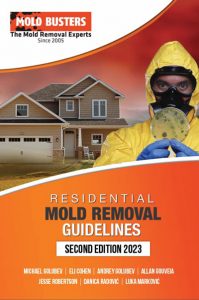
Get Special Gift: Industry-Standard Mold Removal Guidelines
Download the industry-standard guidelines that Mold Busters use in their own mold removal services, including news, tips and special offers:
"*" indicates required fields
Published: April 3, 2023 Updated: October 1, 2025

Written by:
John Ward
Account Executive
Mold Busters
Fact checked by:
Michael Golubev
CEO
Mold Busters
